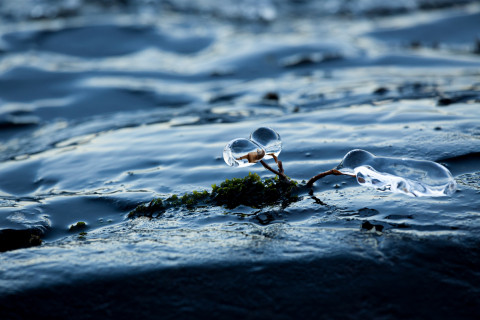The doctoral dissertation in the field of Agriculture and Forestry will be examined at the Faculty of Science, Forestry and Technology, Joensuu Campus.
What is the topic of your doctoral research? Why is it important to study the topic?
Water pollution has become a major concern around the globe due to urbanization, industrialization, mining practices, excessive use of chemical fertilizers, and sewage sludge in agriculture. My research offers an environmentally and cost-friendly method to reduce concentrations of potentially toxic elements (PTEs) and rare earth elements (REEs) in stormwater using perennial plants such as willow (a woody plant), Phragmites australis (grass), and Iris pseudacorus (a flowering plant) in floating wetlands.
This research addresses a significant knowledge gap, specifically focusing on the simultaneous accumulation of cadmium, chromium, and nutrient (N and P) removal by floating treatment wetlands (FTWs) from stormwater. Additionally, it explores the accumulation and recovery of REEs through energy biomass cultivation. Considering the growing significance of managing water resources and maintaining environmental sustainability, the study provides insightful information about effective and environmentally friendly remediation techniques.
What are the key findings or observations of your doctoral research?
Research findings demonstrate that the studied perennial plants have the capability to remove PTEs and REEs from wastewater. These plants can not only withstand a polluted environment but also produce high biomass production along with metal accumulation in roots, which could further be utilized for biorefinery drives. Results could benefit environmental companies, farmers, research institutes, and researcher communities. The practical solutions proposed for stormwater remediation and rare earth element recovery can be implemented in real-world scenarios. These applications have the potential to be translated into technologies or strategies for environmental management and pollution control. The examined methods using plant species offer a sustainable and effective approach to water purification. Moreover, the efficient accumulation of rare earth elements in plant biomass, coupled with successful recovery from ash after combustion, presents an innovative method for obtaining these valuable elements. The findings pave the way for collaboration among researchers, environmental agencies, and industries interested in sustainable practices, fostering knowledge transfer and the development of practical water quality management solutions.
How can the results of your doctoral research be utilised in practice?
The research findings provide practical solutions for remediation of contaminated waters, especially in urban areas where water runoff contains pollutants like cadmium and chromium. This could have implications for sustainable resource management and potentially contribute to reducing dependence on traditional chemical remediation methods. The research contributes to sustainable practices and the circular economy by demonstrating the feasibility of recovering rare earth elements from biomass ash and aligning with global efforts to reduce resource depletion. These perennial plants can be grown near wastewater sites or disturbed lands to restrict the movement of PTEs and REEs into freshwater bodies and provide an opportunity to recover precious metals.
What are the key research methods and materials used in your doctoral research?
The research involved three different microcosm experiments, each focusing on different aspects of plant responses to pollutants. These experiments utilized perennial plants such as Phragmites australis, Iris pseudacorus, and Salix species and their cultivars in FTW. Phragmites australis and Iris pseudacorus saplings were grown in simulated wastewater contaminated with cadmium and chromium at different doses in floating wetlands. Growth height and dry weight were estimated, and Cd and Cr uptake in plant biomass (leaves, stems, and roots) were examined by inductively coupled plasma optical emission spectroscopy (ICP-OES). Furthermore, Willow plants were grown in simulated wastewater contaminated with different concentrations of REEs. Willows growth height and biomass were assessed, and REEs uptake in plant biomass was examined by inductively coupled plasma mass spectrometry (ICP-MS) as followed by EPA method 3052.
The doctoral dissertation of Muhammad Mohsin, MSc, entitled Phytoremediation of potentially toxic elements and rare earth elements by perennial plants in floating wetlands will be examined at the Faculty of Science, Forestry and Technology, Joensuu Campus. The opponent will be Professor Edita Baltrėnaitė-Gedienė, Vilnius Gediminas Technical University, Lithuania, and the custos will be Professor Ari Pappinen, University of Eastern Finland. Language of the public defence is English.
For more information, please contact:
Muhammad Mohsin, muham@uef.fi



